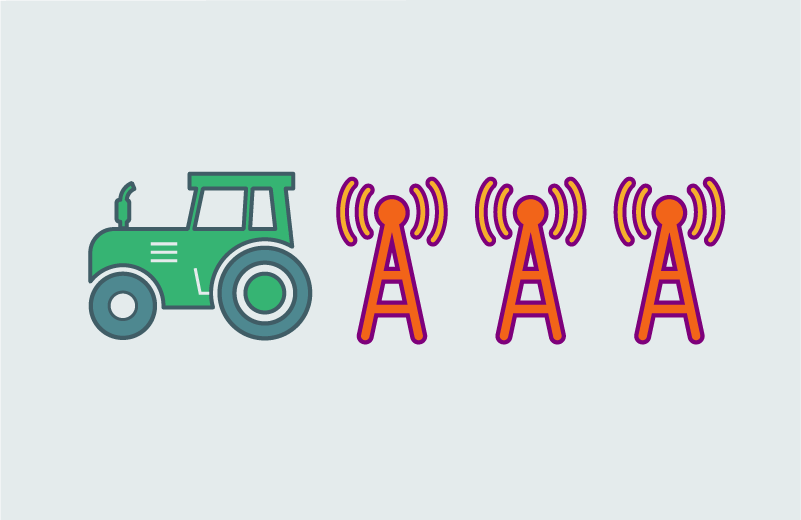
Transforming everything from Entertainment to more practical industries like Farming—5G is becoming a reality. The focus is oftentimes around smartphones, but the opportunity for 5G technology expands far beyond streaming Netflix on your iPhone.
5G is faster and more dependable than 4G due to its high bandwidth, low latency (i.e., the ability to transfer lots of data with minimal delay), and high reliability. This new technology is so robust that it can replace wired connections—bringing everything from factory robots to fleets of autonomous vehicles online.
My parents both grew up on farms in Eastern Montana. Each of their respective grandparents homesteaded the area around 1908 and the families have been farming ever since. My mom started combining in an open cab with no air-conditioning at age 15!
In the 1900s, farming advancements and technology were limited to commercial fertilizer and better tractors. Just before the turn of the century, farmers began to focus on more sustainable agriculture techniques to decrease chemical applications. Additionally, farmers began using no-till or low-till methods to curb erosion to the land. (Source)
Today, agriculture is on the verge of innovation. Sensors and artificial intelligence are poised to take the guesswork out of nature’s cycles. This could allow farmers to remotely monitor weather patterns, livestock wellness, and soil nutrients. Autonomous tractors and machines along with cloud computing could make equipment more efficient.
The Networked Farm
I guess I shouldn’t have been surprised when my Uncle Pete reached out to us with questions about better wi-fi and connectivity for the farm in Eastern Montana. The John Deere mechanics need wi-fi to work on the high-tech tractors. While farms in rural areas wait for full 5G coverage, they are turning to wireless equipment to enable highly accurate GPS and weather forecasting. The trick is finding technical resources in rural areas.
Know Your Crop
According to Agronomy Expert Tanja Folnovic, “farming is barely sustainable without implementing modern farm technologies.” With access to digital information such as weather, soil conditions, and crop health—farming is increasingly relying solely on data.
Sensors might be the most important tool in modern agriculture management—measuring everything from soil moisture to nutrients. This allows farmers to use the minimum amount of irrigating, fertilizing, and spraying for pests to maximize yields.
Extra Hands Around the Farm
Rosie might just be your next farmhand. A host of robots are already spraying weeds, harvesting crops, and monitoring large areas of crops. Due to their precision, robots use 90% less herbicide and grow more environmentally friendly crops.
Farming with 5G
Farming drones are part of the technological advances referred to as “precision agriculture”. Drones are already being used to spray pesticides. This could be done autonomously if they had the computing power to recognize crops, calculate the amount to spray, and determine the speed at which to fly. The low latency allowed by 5G would enable computing to move to the cloud making drones lighter, faster, and more affordable.
John Deere Green
Industrial farming machines often have to work together: a combine that cuts and separates grain will drive alongside a truck, for example, filling it as it goes. As both machines become autonomous, they will have to drive perfectly in sync. 5G would facilitate this real-time communication.
Fully autonomous farm equipment is already available. Tractors will drive with no farmer in the cab, and specialized equipment will be able to spray, plant, plow and weed cropland. (Source)
5G Stats
Super-Fast Connections
5G is at least 10x faster than 4G and will provide an even faster connection than a wired broadband connection at home.
Little to No Latency
Current 4G networks generally have latency (time it takes for data to travel from one point to another) rates between 50-100 milliseconds, but 5G could reduce that rate to 1-4 milliseconds.
When Is The Future?
By 2024, 5G is expected to cover almost 40% of the world and is planned to have broad global coverage by 2035.
Times They Are A-Changin’
Are you a farmer or part of an agriculture-related industry? Does technology in farming scare or excite you? Which technologies are you most interested in? Your yearly agricultural planning may just start to include a Technology Roadmap. We’d love to hear your thoughts.




